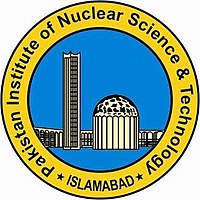
Dr. Abdul Qadeer Khan, NI, HI, FPAS, known as Dr. A. Q. Khan, is a Pakistani columnist, nuclear physicist and metallurgical engineer who founded the uranium enrichment program for Pakistan's atomic bomb project. A. Q. Khan founded and established the Kahuta Research Laboratories (KRL) in 1976, serving as both its senior scientist and Chairman until he retired in 2001. Khan was also a figure in other Pakistani national science projects, making research contributions to molecular morphology, the physics of martensite alloys, condensed matter physics, and materials physics. He founded a political party Tehreek-e-Tahaffuz-e-Pakistan.

Pakistan is one of nine states to possess nuclear weapons. Pakistan began development of nuclear weapons in January 1972 under Prime Minister Zulfikar Ali Bhutto, who delegated the program to the Chairman of the Pakistan Atomic Energy Commission (PAEC) Munir Ahmad Khan with a commitment to having the bomb ready by the end of 1976. Since PAEC, consisting of over twenty laboratories and projects under nuclear engineer Munir Ahmad Khan, was falling behind schedule and having considerable difficulty producing fissile material, Abdul Qadeer Khan was brought from Europe by Bhutto at the end of 1974. As pointed out by Houston Wood, Professor of Mechanical & Aerospace Engineering, University of Virginia, Charlottesville, in his article on gas centrifuges, "The most difficult step in building a nuclear weapon is the production of fissile material"; as such, this work in producing fissile material as head of the Kahuta Project was pivotal to Pakistan developing the capability to detonate a nuclear bomb by the end of 1984.
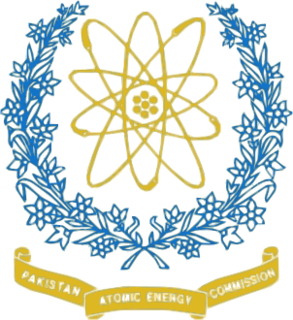
The Pakistan Atomic Energy Commission is an independent governmental agency and a scientific research institution, concerned with research and development of nuclear power, promotion of nuclear science, energy conservation and the peaceful usage of nuclear technology.

Samar Mubarakmand, is a Pakistani nuclear physicist known for his research in gamma spectroscopy and experimental development of the linear accelerator.

Ishfaq Ahmad KhanSI, HI, NI, FPAS, was a Pakistani nuclear physicist, emeritus professor of high-energy physics at the National Center for Physics, and former science advisor to the Government of Pakistan.

As of 2017, nuclear power in Pakistan is provided by 5 commercial nuclear power plants. Pakistan is the first Muslim country in the world to construct and operate civil nuclear power plants. The Pakistan Atomic Energy Commission (PAEC), the scientific and nuclear governmental agency, is solely responsible for operating these power plants. As of 2012, the electricity generated by commercial nuclear power plants constitutes roughly 3.6% of electricity generated in Pakistan, compared to about 62% from fossil fuel and 33% from hydroelectric power. Pakistan is not a party to the Nuclear Non-Proliferation Treaty but is a member of the International Atomic Energy Agency. Pakistan plans on constructing 32 nuclear power plants by 2050.

Abdullah Sadiq, is a Pakistani physicist and ICTP laureate who received the ICTP Prize in the honour of Nikolay Bogolyubov, in the fields of Mathematics and Solid State Physics in 1987 for his contributions to scientific knowledge in the field of Mathematics and Statistical physics. He is the professor of physics and current Dean of the Department of Physics of the Air University of the Pakistan Air Force (PAF).

Munir Ahmad Khan, was a Pakistani nuclear engineer and a nuclear physicist, who served as the chairman of the Pakistan Atomic Energy Commission (PAEC) from 1972 to 1991. He is credited among the persons who are called as "father of the Pakistan's atomic bomb project", for their role in Pakistan's integrated atomic bomb project— the clandestine Cold war program. Khan was technical director of the programme to develop nuclear weapons, which led to the Chagai-I nuclear testing in May 1998 in Balochistan.

Parvez Butt is a Pakistani nuclear engineer and the former chairman of the Pakistan Atomic Energy Commission (PAEC) from 2001 to 2006. A nuclear engineer by profession, Parvez Butt played an important role in the development of the Pakistan's nuclear power and weapons program. As chairman of PAEC, Parvez Butt helped establishing the particle accelerators, nuclear power plants, and started the research program to the field of Nuclear medicines. Parvez Butt is currently serving as an assistant professor of nuclear engineering at the Pakistan Institute of Engineering and Applied Sciences, and also serving as a "Science and Technology" member at the Planning Commission of Pakistan.
Muhammad Masud Ahmad, D.Phil, Sc.D, HI (twice), SI, best known as Masood Ahmad, is a Pakistani theoretical physicist and ICTP laureate known for his work in dual resonance and Veneziano model, a strings sting mathematically described the fundamental forces and forms of matter in quantum state. Having specialised in Quantum and Statistical physics, Ahmad assisted and took part in the development of atomic bomb project as a member of Theoretical Physics Group, in the 1970s, and furthermore, took participation in the development of the atomic bomb programme.

Noor Muhammad Butt ; b. 3 June 1936); SI, FPAS, also known as "Dr. N. M. Butt", is a Pakistani nuclear physicist and the chairman and professor of Nanotechnology at Preston Institute of Nano Science and Technology. He is also the current vice-president of the Islamic World Academy of Sciences. He earned international prestige for his edge-leading research in neutron diffraction, and made important contributions to Mössbauer spectroscopy.
Muhammad Hafeez Qureshi, SI, HI, popular as Hafeez Qureshi, was a Pakistani nuclear scientist and a mechanical engineer, known for his classified work at the Pakistan Atomic Energy Commission (PAEC).
Chaudhry Abdul Majeed was a Pakistani nuclear chemist and a nuclear weapon and reactor expert. He is known as one of the pioneers of Pakistan's nuclear deterrent programme, and has worked closely with former PAEC Chairman Munir Ahmad Khan's plutonium reprocessing project. He rose to prominence when he was apprehended by Pakistan's intelligence agencies in a joint operation in late October of 2001. Majeed was also one of the founding members of Sultan Bashiruddin Mahmood's Ummah Tameer-e-Nau charity; an NGO which caused an international embarrassment for Pakistan.
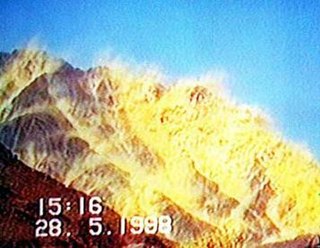
Project-706, also known as Project-726 was a codename of a project to develop Pakistan's first atomic bomb using uranium. At the same time, Pakistani nuclear technology scientists and engineers gained expertise in the use of reactor-grade plutonium and successfully produced weapons grade plutonium by the early 1980s.
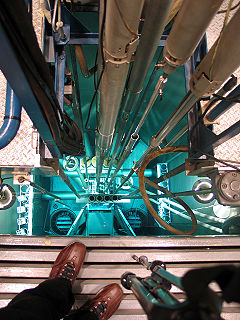
The Pakistan Atomic Research Reactor or (PARR) are two nuclear research reactors and two other experimental neutron sources located in the PINSTECH Laboratory, Nilore, Islamabad, Pakistan.
Dr. Peter Finke is a German theoretical physicist who participated in Project-706, Pakistan's clandestine nuclear research project. A close associate and friend of the famous Pakistani nuclear engineer Munir Ahmad Khan (late), he is citizen of both Pakistan and Germany. He is one of the European scientists who participated in Project-706 in the 1970s.
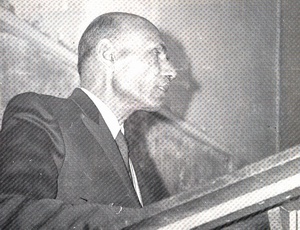
Rafi Muhammad Chaudhry FPAS HI, NI, SI, Skdt best known as R. M. Chaudhry, was a Pakistani nuclear physicist and a professor of particle physics at the Government College University. His teaching and instructions on modern physics influenced many of his student to pursue career in physics who regard him as one of the key architects of having been the pioneer of experimental nuclear physics research in Pakistan and, along with Abdus Salam and Ishrat Hussain Usmani, one of the main creators of Pakistan's nuclear weapons research program in the 1970s. Chaudhry, who served as professor of nuclear physics at Government College University, was later referred to by Dr. Samar Mubarakmand, one of his students, as "the true father of the nuclear weapons program of Pakistan ".
Naeem Ahmad Khan, FPAS, was a Pakistani nuclear physicist and a university professor of physics who was known for his work in developing the techniques to study the Solid-state nuclear track detector and Solid-state nuclear magnetic resonance. His career mostly spent in the Government of Pakistan but taught physics at many universities of his country as well as serving civilian scientist at the Pakistan Air Force.

Ghulam Dastagir Alam Qasmi, was a Pakistani theoretical physicist and professor of mathematics at the Quaid-e-Azam University. Alam is best known for conceiving and embarking the research on gas centrifuge project during Pakistan's integrated atomic bomb project in the 1970s, and he also conceived the research on Gauge theory and Gamma ray bursts throughout his career.
Iqbal Hussain Qureshi, best known as I.H. Qureshi, was a Pakistani nuclear chemist and professor of chemistry at the Institute of and Applied Sciences in Islamabad.
